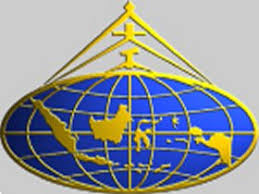
“The data from the Southern California Integrated GPS Network will allow us to anticipate future earthquakes with more accuracy, as well as to study in much greater detail the fundamental processes of crustal deformation that are the root causes of earthquakes.”
Dr. Thomas Jordan, Director Designate, Southern California Earthquake Center
A critical component of any successful rescue operation is time. Knowing the precise location of landmarks, streets, buildings, emergency service resources, and disaster relief sites reduces that time -- and saves lives. This information is critical to disaster relief teams and public safety personnel in order to protect life and reduce property loss. The Global Positioning System (GPS) serves as a facilitating technology in addressing these needs.
GPS has played a vital role in relief efforts for global disasters such as the tsunami that struck in the Indian Ocean region in 2004, Hurricanes Katrina and Rita that wreaked havoc in the Gulf of Mexico in 2005, and the Pakistan-India earthquake in 2005. Search and rescue teams used GPS, geographic information system (GIS), and remote sensing technology to create maps of the disaster areas for rescue and aid operations, as well as to assess damage.
Another important area of disaster relief is in the management of wildfires. To contain and manage forest fires, aircraft combine GPS with infrared scanners to identify fire boundaries and “hot spots.” Within minutes, fire maps are transmitted to a portable field computer at the firefighters’ camp. Armed with this information, firefighters have a greater chance of winning the battle against the blaze.
In earthquake prone areas such as the Pacific Rim, GPS is playing an increasingly prominent role in helping scientists to anticipate earthquakes. Using the precise position information provided by GPS, scientists can study how strain builds up slowly over time in an attempt to characterize, and in the future perhaps anticipate, earthquakes.
Meteorologists responsible for storm tracking and flood prediction also rely on GPS. They can assess water vapor content by analyzing transmissions of GPS data through the atmosphere.
GPS has become an integral part of modern emergency response systems -- whether helping stranded motorists find assistance or guiding emergency vehicles.
As the international industry positioning standard for use by emergency and other specialty vehicle fleets, GPS has given managers a quantum leap forward in efficient operation of their emergency response teams. The ability to effectively identify and view the location of police, fire, rescue, and individual vehicles or boats, and how their location relates to an entire network of transportation systems in a geographic area, has resulted in a whole new way of doing business. Location information provided by GPS, coupled with automation, reduces delay in the dispatch of emergency services.
Incorporation of GPS in mobile phones places an emergency location capability in the hands of everyday users. Today’s widespread placement of GPS location systems in passenger cars provides another leap in developing a comprehensive safety net. Today, many ground and maritime vehicles are equipped with autonomous crash sensors and GPS. This information, when coupled with automatic communication systems, enables a call for help even when occupants are unable to do so.
The modernization of GPS will further facilitate disaster relief and public safety services. The addition of new civil signals will increase accuracy and reliability all over the world. In short, GPS modernization translates to more lives saved and faster recovery for victims of global tragedies.
For additional information about the use of GPS in public safety and disaster relief, visit any of the following external websites:
http://www.fgdc.gov/usng/
Benefits (if use GPS):
* Deliver disaster relief to areas in a more timely and accurate manner, saving lives and restoring critical infrastructure.
* Provide position information for mapping of disaster regions where little or no mapping information is available.
* Enhance capability for flood prediction and monitoring of seismic precursors and events.
* Provide positional information about individuals with mobile phones and in vehicles in case of emergency.
Source: http://www.gps.gov/applications/safety/index.html</span>






























0 komentar:
Post a Comment